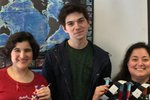An insider's guide to sending your experiment to space
On July 14th, 2016 Julian Rubinfien’s dreams of winning the Genes in Space contest came true. However, his job was not finished. Between the Genes in Space finalists announcement until the launch of the winner’s experiment to the International Space Station, much work is necessary to turn the winner’s proposal into an experiment that can be conducted in space. Julian has been working hard alongside his teachers, mentors, and scientists from many of the Genes in Space partner organizations. Julian’s experiment is now scheduled to launch from the Kennedy Space Center in mid-March of 2017. As the launch nears, Genes in Space will be publishing a series of blog posts that bring readers inside the process of preparing experiments for space. In this blog post, Brandon Wagner and Jordan Aken, System Engineers at Boeing, give us the inside scoop on preparing an experiment for space.
Genes in Space – Behind the Scenes
Guest post by Brandon Wagner and Jordan Aken, System Engineers, The Boeing Company
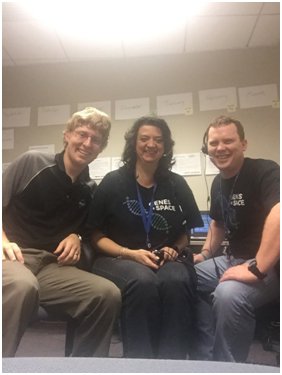
Hey there! We’re Brandon and Jordan, and we’re here to tell you about a little bit about what’s behind the curtain when you launch your experiment to ISS! First, let’s introduce you to the team.
That’s us – Brandon’s the one with the shirt that doesn’t match – with Michelle, one of our project managers. In this picture we’re sitting in the console room we have in Houston while an ISS crew member is operating the experiment of the first Genes in Space winner.
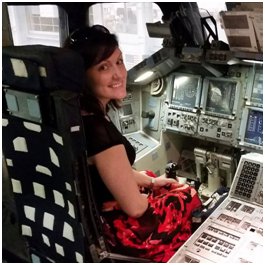
This is Jayme Poppin! She’s the current project manager this year’s Genes in Space and hails from Huntsville, AL. She’s the lead for this year’s effort to get Julian’s science sample onboard the ISS and will be returning to help out with future Genes in Space iterations.
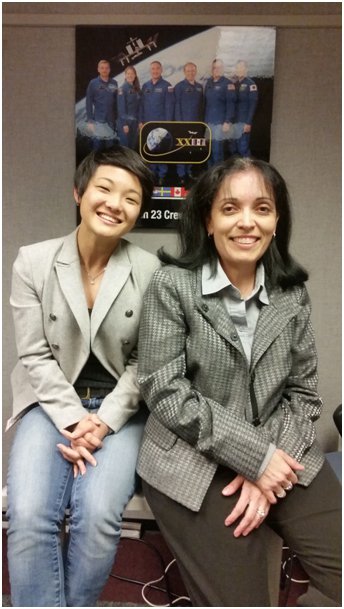
And finally we have Melissa Boyer (right) and Teresa Tan (left). They are our Payload Integration Managers assigned to us by NASA to help us get the Genes in Space hardware and samples to Station and make sure we have everything we need to function on-orbit.
Alright, so you’re flying samples to the International Space Station for astronauts to operate your very own experiment through Genes in Space and we’re helping you get it there. How cool is that?!? But what makes this possible? How do you get your samples all the way up to Station? Throwing your hardware at the sky really hard won’t work. Trust me… we’ve tried. Rather it involves a lot of coordination with a lot of different people at NASA, a lot of testing, and a lot of hard work. Lots.
The whole process from start to finish will involve a myriad of items to complete, and since no two payloads are alike, the order in which one completes those milestones and what you need to provide to do so is unique to the individual payload.
The physical components of Genes in Space mainly consists of the miniPCR, the cables necessary to operate the miniPCR, and your samples. So, you’d think it’d be as simple as putting all those items in a rocket, pointing it up, and then lighting the fuse and running off as fast as you can. But it’s not.
What happens if you didn’t pack your bag properly and the g-forces of launch caused the hardware to break or the samples to leak?
What if the samples aren’t kept at exactly the right temperature while in storage during launch and on orbit?
- Where will the miniPCR be deployed to process
your samples?
- How will it interface with Station to allow it
to get power to run?
- Will the software to control the miniPCR work on
Station computers?
- When will the crew preform the experiments?
- What steps will the crew preform in order to
properly operate the experiment?
- Will the hardware operate in a way that does not
pose a danger to the crew or Station?
- Does the hardware meet all requirements NASA has
to operate on Station?
These are only a few of the many, many questions we had to answer in order to get the core hardware up to Station in order to operate your experiments. As part of the Genes in Space development team, it was our responsibility for getting every bit of data NASA needed to ensure safe operations while aboard ISS. We were also responsible for making sure we secured all the resources we needed onboard Station to perform our on-orbit tasks.
A few of our major items were interface
requirements and safety requirements. Both are thoroughly documented, and
define how to properly and safely operate hardware while onboard Station. We
were required to submit analysis and test data, inspections, and certificates
of compliance to close out these requirements, as well as proceed through 3
separate safety reviews.
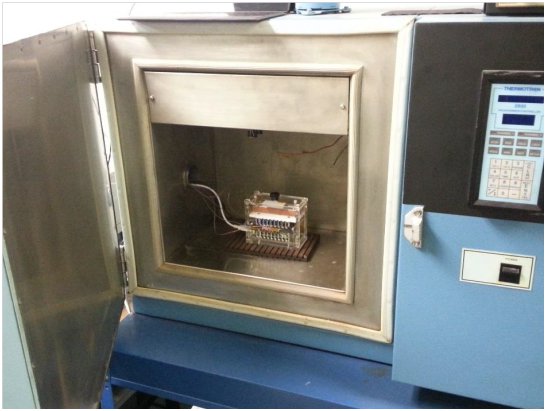
Here we have the miniPCR in a thermal chamber conducting some tests to verify ISS requirements.
Once we figured out the majority of the “what’s”, “where’s”, and “how’s”, we were also responsible for creating the structured procedure that the crew would use to carry out Genes in Space.
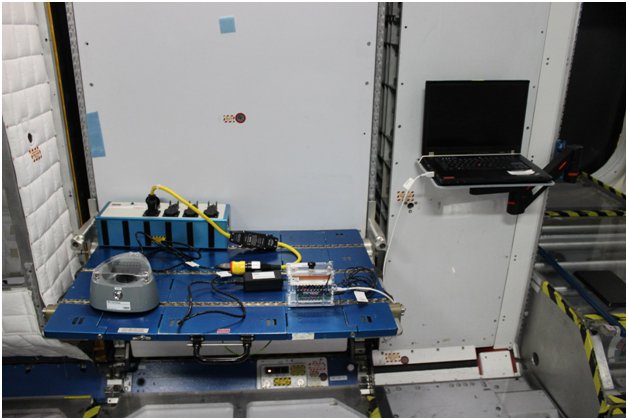
Here we have our hardware on the Maintenance Work Area (the blue table) in the Building 9 ISS mock-ups, which are life-size models of ISS modules, to run through the Genes in Space draft procedures to refine them prior to getting them approved.
All in all, it may not be easy, but the science in the end is always worth it. And who knows, if you keep at it, years from now as you look down on earth, you might just realize you’re flying your very own genes in space!


